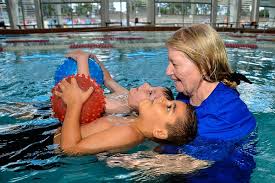
Water safety guidelines are essential for creating a secure environment in any aquatic setting, from public pools to natural bodies of water. These guidelines establish best practices to prevent accidents, protect swimmers, and ensure everyone can enjoy water activities safely. Here’s why following water safety guidelines is so important for swimmers, instructors, and facility managers alike.
1. Reduces Risk of Drowning and Accidents
Following structured water safety guidelines is one of the most effective ways to prevent drowning and other water-related incidents. Guidelines cover essential safety protocols, such as supervising children, enforcing no-diving zones, and ensuring flotation devices are available. These rules help to keep everyone safe, especially in high-risk areas like deep water sections or crowded pools.
2. Promotes Safe Swimming Skills
Guidelines often include recommendations for swim skill development, tailored to different age groups and abilities. From beginners to advanced swimmers, these skills ensure participants have the necessary confidence and competence in the water. Instructors also benefit, as Water safety guidelines provide a framework for teaching safety practices effectively across all levels.
3. Ensures Proper Emergency Preparedness
Guidelines typically mandate training in CPR, first aid, and emergency response for anyone supervising aquatic environments. This preparedness allows lifeguards, instructors, and even swimmers to act quickly in emergencies, minimising the impact of incidents and possibly saving lives.
4. Creates a Culture of Responsibility
Water safety guidelines foster a culture of responsibility among all participants, from pool staff to patrons. Adhering to these rules creates an environment where everyone, from children to adults, understands the importance of safe behaviour around water, helping to reduce careless actions that could lead to accidents.
5. Enhances Facility Safety and Compliance
Aquatic facilities that implement strict water safety guidelines are better prepared to meet local and national safety standards. Compliance with these standards is often required for operational licences and insurance, which also reassures patrons of the facility’s commitment to safety.
6. Supports Inclusive, Accessible Swimming
Water safety guidelines help ensure that swimming environments are safe for everyone, including children, elderly swimmers, and individuals with disabilities. By implementing inclusive safety practices, such as accessible pool entries and appropriate staff training, facilities create a welcoming space where all individuals feel safe and supported.
Conclusion
Water safety guidelines are fundamental to maintaining a safe and inclusive environment for aquatic activities. By reducing risks, preparing for emergencies, and promoting safe swimming habits, these guidelines protect swimmers and ensure that everyone can enjoy water-based recreation safely.
